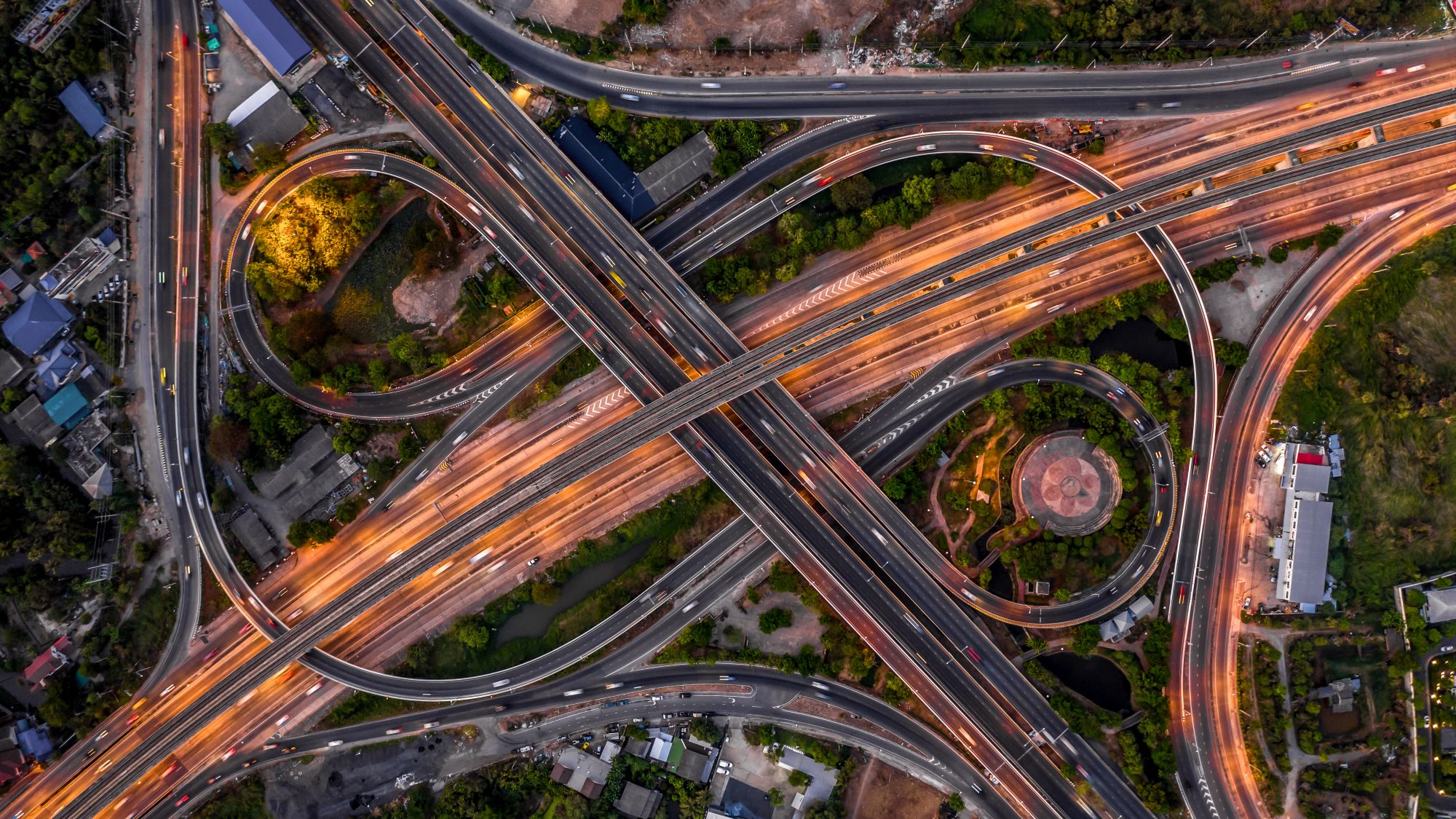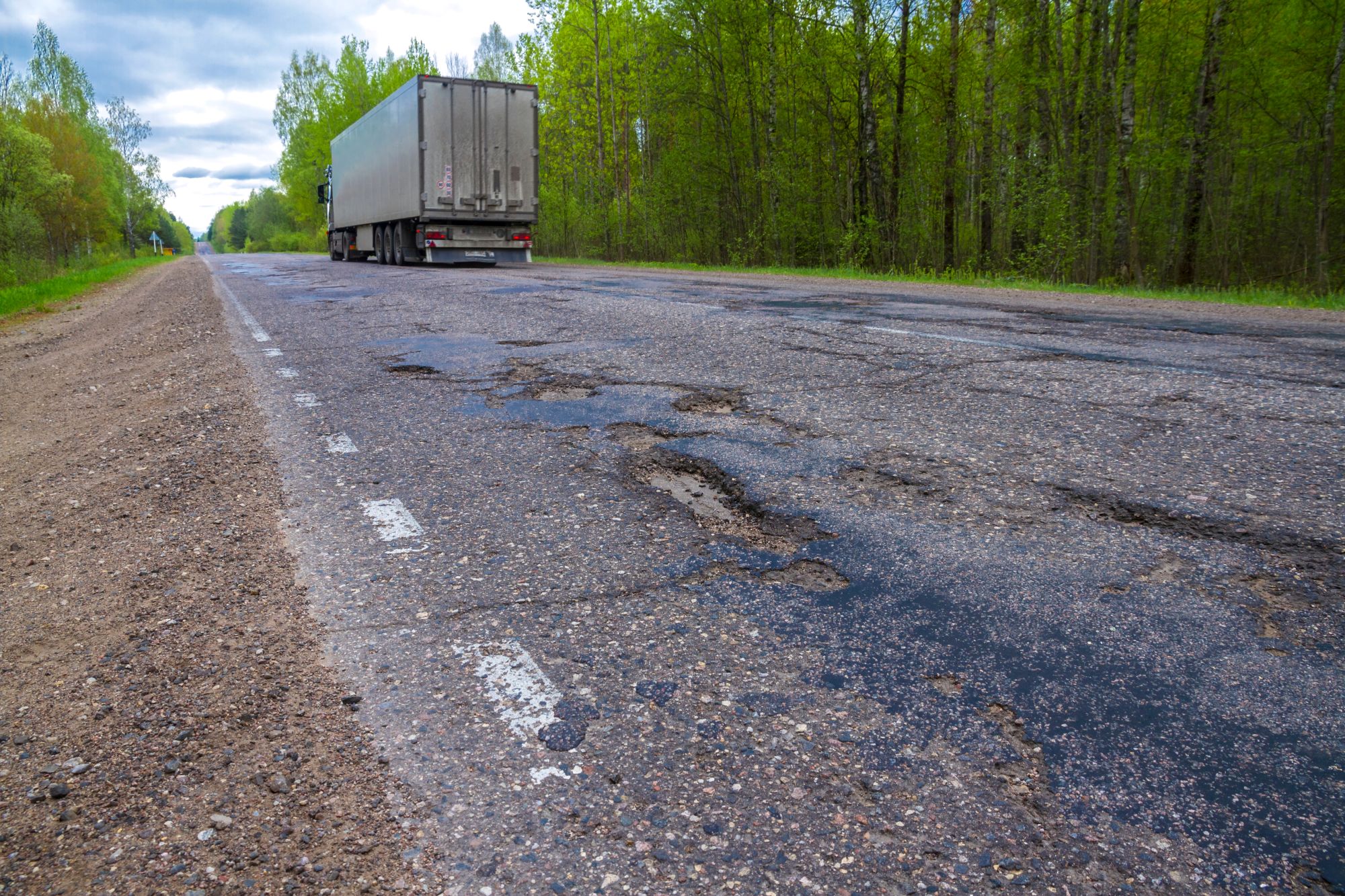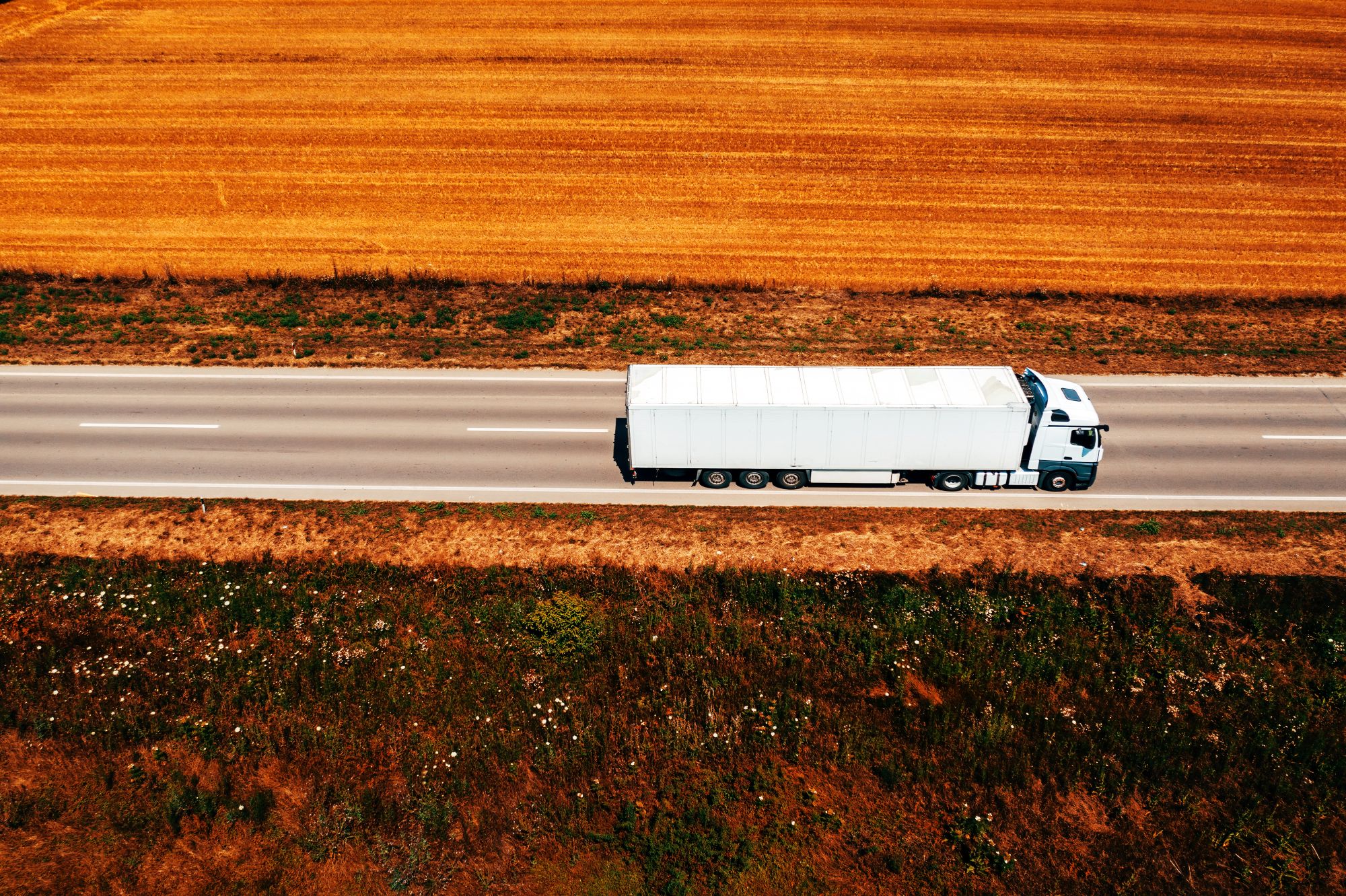
Guest
Hogyan befolyásolhatja a brit infrastruktúra-finanszírozás a mobilitási ágazatot
Létrehozva: 02. 07. 2025
•
Frissítve: 03. 07. 2025
Az évek óta tartó, egyenetlen beruházások és a növekvő forgalmi torlódások után az Egyesült Királyság kormánya több mint 700 milliárd fontnyi infrastrukturális kiadást vállalt a következő évtizedre - ennek nagy részét a nemzeti utakra szánják. Az új teherforgalmi folyosóktól kezdve a legmodernebb digitális közlekedési rendszerekig a 10 éves infrastrukturális stratégia hatása a kereskedelmi járművezetőkre és a mobilitási ágazat szélesebb rétegére is átalakító hatású lehet.
Az utak elérik a töréspontot
Az utak csak egy részét képezik az Egyesült Királyság közlekedési rendszerének, de az áruk túlnyomó többségét ezeken keresztül szállítják. [A kormány adatai szerint] (https://assets.publishing.service.gov.uk/media/67dd4f03c6194abe97358bf6/dft-investment-management-srn-25-26.pdf#:~:text=create%20jobs%20and%20housing%20and,at%20the%20end%20of%20March) a belföldi áruszállítás 81%-a, valamint az import és export 75%-a közúton történik, így ez az Egyesült Királyság logisztikai és gazdasági gerince.
És annak ellenére, hogy az Egyesült Királyság úthálózatának hossza alig több mint két százalékát teszi ki, a stratégiai úthálózat (SRN) az összes közúti utazás 34%-át bonyolítja le - beleértve a legidőérzékenyebb, nagy forgalmú áruszállítási útvonalak közül sokat. Az ezeket használó járművezetők számára az út állapota és kapacitása közvetlen hatással van a biztonságra, a hatékonyságra és a szállítási teljesítményre.
Az Útállapot-index (RCI) adatok azonban azt mutatják, hogy Anglia és Wales hálózatának mintegy 24 500 mérföldje - azaz több mint minden 10 mérföldből egy - valószínűleg karbantartásra szorul a következő 12 hónapban.
A közelmúltban több vészhelyzeti hídlezárás is rávilágított arra, hogy a hálózat mennyire sebezhetővé vált. Egyes területeken a megrepedt tartószerkezetek és a több évtizedes beton veszélyes körülményeket teremtett minden úthasználó számára - különösen a nehéz tehergépjárművek számára, amelyek gyakran elsőként szembesülnek súlykorlátozásokkal vagy kényszerű áttereléssel.
A kormány infrastrukturális stratégiájának részeként egy új, 1 milliárd fontos alapot hozott létre a leromlott állapotú hidak, átkelők és felüljárók javítására és újjáépítésére. Ez egy üdvözlendő lépés, amely tükrözi a növekvő ipari nyomást. A hivatásos járművezetők számára ez kevesebb kerülőutat, kevesebb hirtelen korlátozást és kevesebb időveszteséget jelenthet a modern logisztikának nem megfelelő infrastruktúra miatt.
A biztonság azonban nem csak a katasztrofális meghibásodások elkerüléséről szól. Hanem a hosszú távú ellenálló képességről is - az utak, hidak és leállósávok megfelelő karbantartásáról, mielőtt veszélyessé válnának. A karbantartás újbóli előtérbe helyezése azt jelzi, hogy az utak karbantartása végre elkezdhet igazodni a tőlük függő járművek méretéhez, méretéhez és sebességéhez.

A kátyúk problémája
Bár a nagy horderejű projektek uralják a bejelentéseket, gyakran az útburkolat mindennapi állapota az, ami a legnagyobb hatással van az autósokra. A fuvarozók számára a kátyúk több mint kellemetlenség - állandó biztonsági kockázatot és költséges terhet jelentenek.
Az egyenetlen felületeknek való ismételt kitettség növeli a nehéz tehergépjárművek kopását, károsítja a gumiabroncsokat és a felfüggesztést, és hozzájárul a járművezető fáradtságához. Egyes esetekben a kátyúk károk miatt a járművek sürgős javítás miatt le kellett állniuk az útról, ami megzavarta a szállítást és befolyásolta a szolgáltatási szintre vonatkozó megállapodásokat.
A járművezetők számára a kockázatok személyesek. A kátyúk kikerülése - különösen a keskeny vagy forgalmas utakon - veszélyes manőverekhez vezethet. Ha ehhez még rossz időjárás, korlátozott megvilágítás vagy szoros szállítási ütemterv is társul, a tét csak nő.
A szélesebb körű infrastrukturális törekvés részeként a kormány a változtatási terv részeként [1,6 milliárd fontot] (https://www.gov.uk/government/news/pm-tells-councils-to-prove-action-on-pothole-plague-to-unlock-extra-cash-and-reveals-48bn-for-major-roads) különített el a helyi infrastruktúra fejlesztésére, beleértve a kátyúkat, a repedezett felületeket és az elhasználódott útburkolatokat. A cél az utak biztonságosabbá és megbízhatóbbá tétele - különösen a teherforgalomra nehezedő útvonalakon.
Ez nem oldja meg a problémát egyik napról a másikra, de a prioritások megváltoztatását jelenti - felismerve, hogy a járművezetők jóléte az alapokkal kezdődik, és hogy a biztonságos, kényelmes utazás a jól karbantartott utakon múlik.
A flották számára az ebből származó előnyök közé tartozik a kevesebb nem tervezett javítás, az alacsonyabb biztosítási kárigények és a sofőrök kevesebb állásideje. A járművezetők számára ez kevesebb rázkódást, kevesebb stresszt és eggyel kevesebb dolgot jelent, ami miatt aggódniuk kell egy hosszú műszak alatt.
Megbízható hálózat
A sofőrök jóléte a modern közlekedésről szóló beszélgetések középpontjában áll. A hosszú munkaórák, a késedelmes menetrendek és a nem megfelelő felszereltség megviselik a sofőröket. A kormány legújabb tervei azonban reményt adnak egy biztonságosabb, jobban összekapcsolt hálózatra.
Az Egyesült Királyságban a járművezetői létesítmények nehezen tudtak lépést tartani a kereslettel. A parkolási lehetőségek gyakran korlátozottak, a szolgáltatások korlátozottak, és sok pihenőhelyen a kényelem és a biztonság nem kielégítő - különösen a hosszú távú műveletek esetében. Ezért a kormány is javítja a vezetési környezetet: biztonságosabb parkolás, jobb jóléti szolgáltatások és tervezési reformok az új helyek fejlesztésének felgyorsítása érdekében.
Ezzel egyidejűleg felgyorsulnak az elektromos és hidrogénüzemű teherautók töltő- és üzemanyagtöltő csomópontjaiba történő beruházások. A Moto például vállalta, hogy 23 autópályán több mint 300 elektromos töltőt telepít a nehéz tehergépjárművek számára, míg az Ashford Truckstopot a Csatornán átmenő teherforgalom egyik fő töltőállomásává alakítják át. Ezek a létesítmények nem csak a járművek mozgásban tartásáról szólnak - biztonságos, jól felszerelt helyeket biztosítanak a járművezetőknek a pihenésre és a feltöltődésre.
Ha a járművezetők biztonságos megállóhelyet keresnek, az intruck alkalmazásunk lehetővé teszi számukra, hogy az Egyesült Királyság és Európa különböző részein megtalálják és lefoglalják a pihenőhelyeket. Tudjon meg többet és töltse le itt.

A torlódások költségei
A forgalmi dugók, a kiszámíthatatlan útvonalak és a szállítási határidők betartásának kényszere hozzájárul a sofőrök stresszéhez és fáradtságához - és veszélyesebbé teszik az utakat.
Az olyan jelentős infrastrukturális fejlesztések, mint a Temze alsó keresztezése, az A66-os autópálya dualizálása és az M60-as Simister Island fejlesztése a torlódások csökkentésére és a baleseti kockázatok mérséklésére szolgálnak az Egyesült Királyság leghírhedtebb csomópontjainál.
Emellett továbbra is törekednek a biztonságosabb, zökkenőmentesebb utazást támogató digitális eszközök bevezetésére. A valós idejű közlekedési riasztások, az intelligens észlelőrendszerek és a jobb forgalomirányítás segíteni fogja a flottakezelőket és a járművezetőket abban, hogy gyorsan reagáljanak a zavarokra, és szükség esetén átirányítsák az útvonalat.
A [Nemzeti Autópályák Digitális Útprogramja] (https://nationalhighways.co.uk/our-work/digital-data-and-technology/digital-roads/) már most megteremti az alapokat, olyan intelligens infrastruktúrával, amely képes a veszélyek korábbi észlelésére, a forgalom intelligens irányítására és a világosabb, valós idejű frissítések közlésére.
Mit jelent ez a mobilitás szempontjából?
Egy lépés előre a mobilitás és a járművezetők jóléte szempontjából. Összehangolt nemzeti erőfeszítés az Egyesült Királyság infrastrukturális lemaradásának felszámolására és az utak korszerűsítésére oly módon, hogy az a leginkább rájuk támaszkodó járművezetők javát szolgálja.
Az igazi próbatétel a szállítás lesz. Ahhoz, hogy a finanszírozás kézzelfogható javulásokká váljon, meg kell hallgatni a járművezetőket, tanulni kell a közvetlen tapasztalatokból, és a sikert nem csak az utak költségén, hanem azon is mérni kell, hogy milyenek az utak.
"Ez az új beruházási hullám nem csak a menetidő csökkentéséről szól" - mondja Stuart Willetts, a SNAP brit üzletfejlesztési igazgatója. "Olyan közlekedési hálózat kiépítéséről van szó, amely támogatja a járművezetők jólétét, a működési hatékonyságot és a tiszta mobilitásra való átállást. Alig várjuk, hogy lássuk az eredményeket."
Szeretné látni, hogyan fejlődik a mobilitás ott, ahol Ön is van?
Használja a SNAP-térképet a szolgáltatások és megoldások megtalálásához az Ön közelében - függetlenül attól, hogy milyen úton jár.



